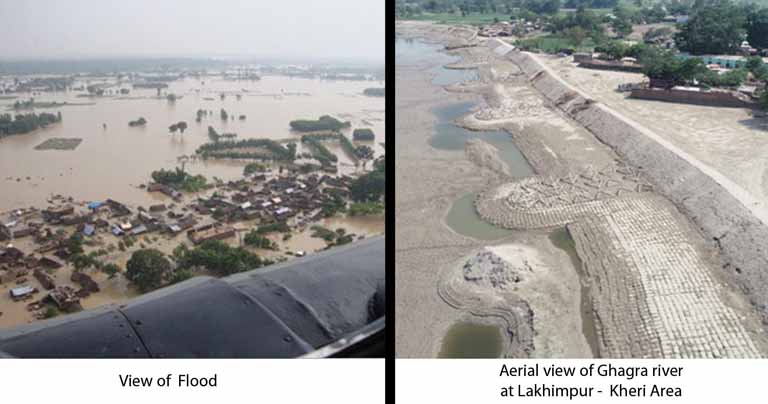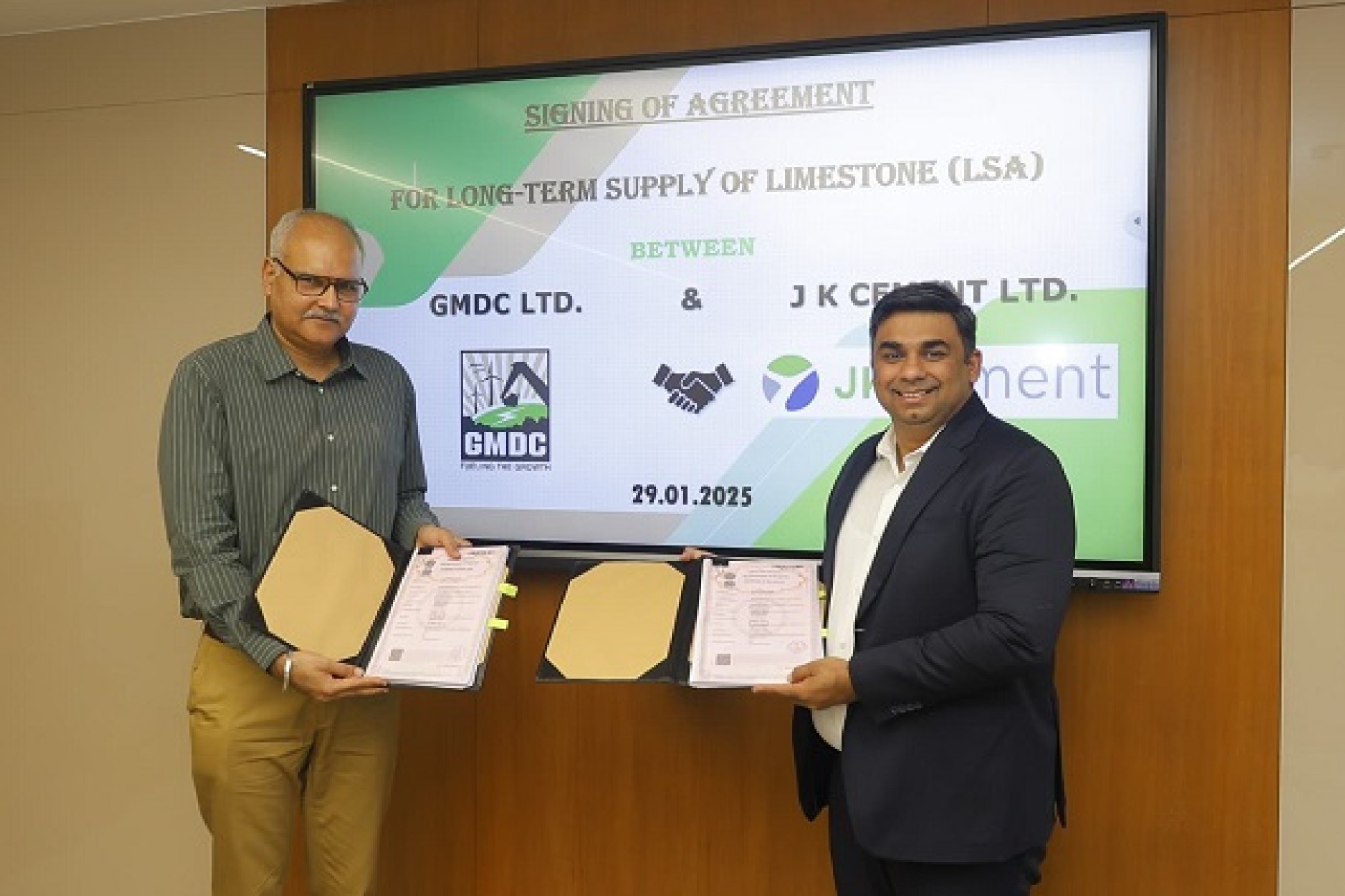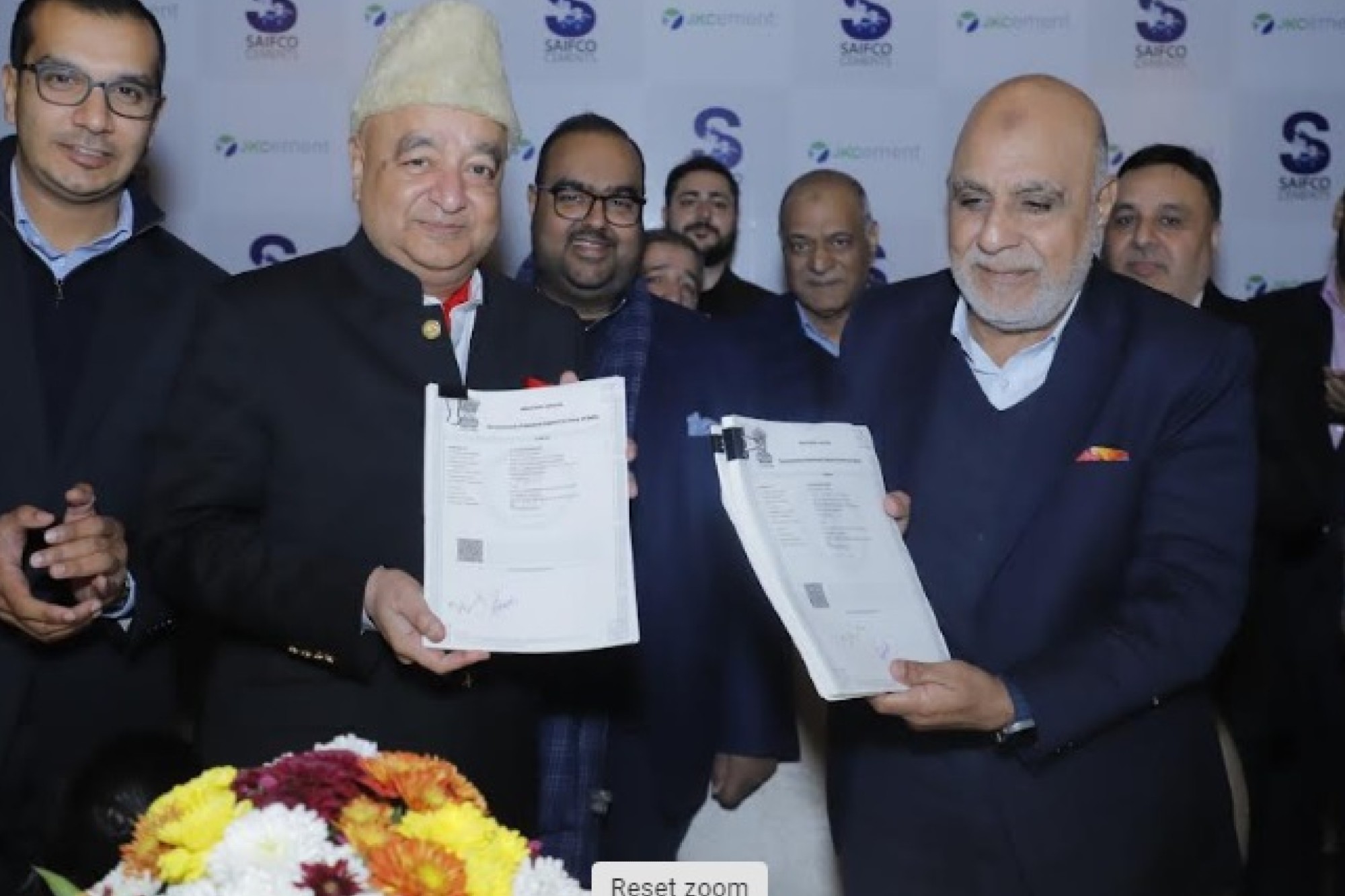Implementing flood protection mechanism on the downstream of River Sharda, Ghaghara
By Edit Team | January 15, 2022 6:42 pm SHARE

The challenge was to meet the construction schedule before monsoon, and the mobilisation of soil for construction of Dyke.
The Lakhimpur – Khiri has witnessed several floods in the past due to heavy rainfall. It was observed by the locals that the primary reason for floods or increase in water level in Sharda River was due to intense rainfall in the region, and the addition of new water in the river from upstream side from Nepal generally in the month between June and September every year. Human lives are hugely affected due to this high-intensity monsoon every years, since the proximity of the people residing at the adjacent areas is very less, hence the ones residing near the river banks fall prey to the flood impacts occurring in the River Sharda & Ghaghara. Both these rivers have recorded high velocity and frequently changing their course in the past.
The location is Lakhimpur – Khiri, 137 km from Lucknow. Every year, the local residents have to face such severe issues during monsoon incurring huge losses, including human lives, properties, agricultural/farm loss, cattle loss etc.
Project challenges
Most of the rivers in this region originate from the high mountains where they have steep gradients giving the flow a massive erosive power. Moreover, such intense rainfall and breakout events can accelerate the river flow to such an extent that the water makes a significant impact on the watercourses and adjacent areas.
The challenge was to meet the construction schedule before monsoon, and the mobilisation of soil for construction of Dyke. The earthen dyke is subjected to either loss of fines or breach of partially constructed bund due to wetting and drying every day.
Solution proposed
Generally, as conventional approach, big boulders are used for river training work. However, mobilising such huge quantity of stones in short span of contract period is not just difficult, but also expensive. Further, extraction of stones in huge quantity can potentially impact the environment’s balance. Transporting and handling the material to work site is yet another issue and needs involvement of machinery to handle it.
Geotextile bags filled with locally available soil, is the effective alternative against all other options; it is cost effective solution largely used in flood protection measures. The design was finalised using Geotextile bag for construction of longitudinal and transversal protection structures which will be permeable, economical and effective in terms of control sedimentation.
The Flood protection work/dikes using Geotextile bags (longitudinal protection structure) and construction of porcupine spur (Transversal Protection Structure).
The main purpose of both structures is to prevent flooding of the adjoining villages, and to slow down or stop the shifting of natural water way.
Groynes/spurs are constructed transverse to the river flow extending from the bank into the river. This form of river training works perform one or more functions, such as training the river along the desired course to reduce the concentration of flow at the point of attack; creating a slack flow for silting up the area in the vicinity and protecting the bank by keeping the flow away from it.
Execution on site:
- Setting out the area as per drawing;
- Mobilisation of Geotextile bags and soil to the project site;
- The excavated soil was disposed of by tippers to a suitable distance from bank side to reduce overburden of bank;
- The slope formation was done with necessary ramming to remove any undulations and corrected to the desired slope before laying nonwoven geotextile;
- The geotextile was laid across the dressed slope over which sand filled geotextile bags were placed;
- The bags were filled with locally available River Sand; the sand used as filling was as per technical specification of the project;
- After sand filling was completed, the geotextile bag was weighed to confirm the desired weight as per technical requirement; • After confirmation of weight, bag was stitched by special hand held stitching machine;
- For the convenience bags were stored in batches or any suitable multiples as per available space at site; • The dumping/laying of geotextile bags for launching apron was carried out when river was dry or with the help of small boats to complete the activity on time;
- Laying of bags was done under supervision of the site in charge. Laying work was inspected time to time by authority;
- Laying of porcupine concrete element was carried out as per drawings and installation guidelines for spur construction
Conclusion
It is observed that Completed Geotextile bags structure withstood floods of last 3 years without any major damage of the properties, loss of land and without loss of any cattle or people. The protection is serving as desired by the authority. It is also observed that the river has changed its course @ 9 -10m from its existing flow profile and deposition of the sand at multiple locations.
For Further details, pls contact:
TechFab India Industries Ltd. Head Office: 712, Embassy Centre, Nariman Point, Mumbai – 400021
Email: info@techfabindia.com,
Website: www.techfabindia.com
Cookie Consent
We use cookies to personalize your experience. By continuing to visit this website you agree to our Terms & Conditions, Privacy Policy and Cookie Policy.






































































